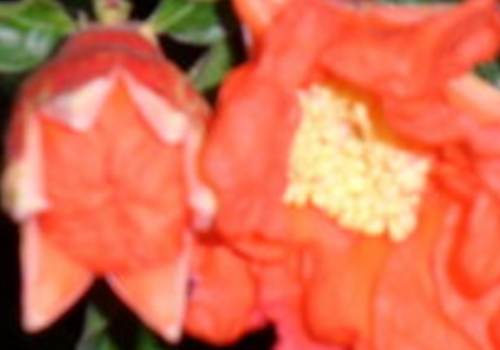Matters needing attention in the application of trace element fertilizer
Fertilization is indispensable when we are planting, and crops have a more comprehensive demand for nutrition, so fertilizers are divided into inorganic fertilizers, organic fertilizers and trace element fertilizers. Among them, crops have less demand for trace element fertilizer, but its importance is no less than a large number of elements. When there is a lack of certain trace elements, it will seriously affect the growth of crops, so do we have any precautions when applying trace elements? Let's take a look at it with the editor.

1. Pay attention to the dosage
As I just said, although most crops can not grow without trace elements, the demand for trace elements is very low. There are many kinds of trace elements, and the demand of crops for many trace elements ranges from lack to satisfaction. Therefore, when we apply trace elements, we must pay attention to control the dosage. It must be applied comprehensively and evenly to prevent excessive application, resulting in excessive concentration and affecting the growth of crops.
2. Element deficiency should be applied accordingly.
When planting, different properties and types of soil will contain different trace elements, and the effect of applying trace elements will be different. For example, in most northern areas, the content of zinc, manganese, boron and other trace elements in the soil is low, and the availability is also insufficient. In the soil of the south, it is easy to lack molybdenum. Therefore, when we apply trace elements, we must control the varieties of trace elements according to the situation of trace elements in the soil, based on the principle of what is lacking.
3. Crop types
When we apply trace elements, we should also pay attention to what crops are planted. Because different crops have different responses and adaptability to various trace elements, the demand for trace elements will also have different requirements. For example, when planting corn, we should pay attention to increase the proportion of zinc fertilizer, while rape has higher requirements for boron. Therefore, when we apply trace elements, we should pay attention to control the use of different trace elements according to the planting of crops.
4. Improve the soil
The phenomenon of element deficiency in crop growth is generally due to the lack of trace elements in soil and poor soil quality. The PH value of soil is the primary reason that affects the content of soil trace elements, followed by property, humidity, permeability and so on. Therefore, in order to solve the problem of lack of trace elements, we should also pay attention to the improvement of soil when applying trace element fertilizer. If the soil is too sour, apply organic fertilizer, on the contrary, it is necessary to sprinkle quicklime powder to improve the soil structure.
5. Combined fertilization
When planting, the effect of trace element fertilizer can be effective only by meeting the crop's demand for a large number of elements such as nitrogen, phosphorus and potassium. There are many trace elements in organic fertilizer, and it is also an important measure to supplement soil trace elements. Proper application of organic fertilizer can improve the quality of soil and thus increase the content of trace elements in soil. The combined application of organic fertilizer and trace element fertilizer is the key to meet the nutritional needs of crops.
The above is a brief introduction to the matters needing attention in the application of trace element fertilizer, which plays a key role in the growth of crops. It is something that we can not ignore when planting, and we must pay more attention to it. That's all for today's introduction. This article is for reference only. Thank you for your reading and support.
- Prev

What do pomegranate flowers mean? why do the leaves turn yellow?
Pomegranate flowers, I believe many people have seen, is very beautiful. What does pomegranate flower mean? Why do the leaves turn yellow? Pomegranate flower: pomegranate flower, deciduous shrub or small tree pomegranate flower; pomegranate plant, pomegranate tree trunk grayish brown, flaky peeling, twigs yellowish green smooth, often quadrangular
- Next

Planting technique of Solidago canadensis
Planting technique of Solidago canadensis
Related
- Fuxing push coffee new agricultural production and marketing class: lack of small-scale processing plants
- Jujube rice field leisure farm deep ploughing Yilan for five years to create a space for organic food and play
- Nongyu Farm-A trial of organic papaya for brave women with advanced technology
- Four points for attention in the prevention and control of diseases and insect pests of edible fungi
- How to add nutrient solution to Edible Fungi
- Is there any good way to control edible fungus mites?
- Open Inoculation Technology of Edible Fungi
- Is there any clever way to use fertilizer for edible fungus in winter?
- What agents are used to kill the pathogens of edible fungi in the mushroom shed?
- Rapid drying of Edible Fungi

